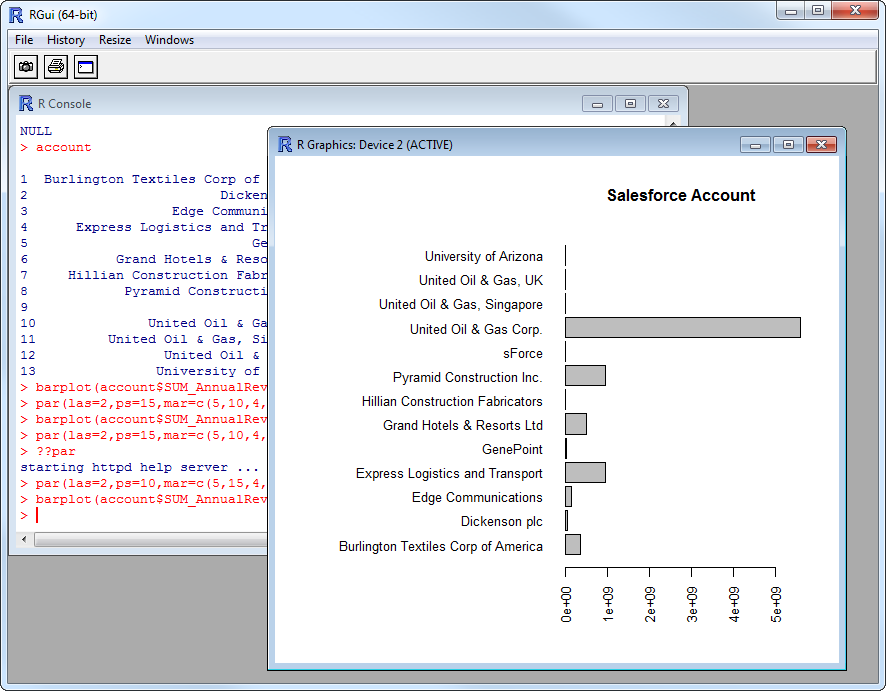Discover how a bimodal integration strategy can address the major data management challenges facing your organization today.
Get the Report →Analyze Adobe Analytics Data in R
Use standard R functions and the development environment of your choice to analyze Adobe Analytics data with the CData JDBC Driver for Adobe Analytics.
Access Adobe Analytics data with pure R script and standard SQL on any machine where R and Java can be installed. You can use the CData JDBC Driver for Adobe Analytics and the RJDBC package to work with remote Adobe Analytics data in R. By using the CData Driver, you are leveraging a driver written for industry-proven standards to access your data in the popular, open-source R language. This article shows how to use the driver to execute SQL queries to Adobe Analytics and visualize Adobe Analytics data by calling standard R functions.
Install R
You can match the driver's performance gains from multi-threading and managed code by running the multithreaded Microsoft R Open or by running open R linked with the BLAS/LAPACK libraries. This article uses Microsoft R Open 3.2.3, which is preconfigured to install packages from the Jan. 1, 2016 snapshot of the CRAN repository. This snapshot ensures reproducibility.
Load the RJDBC Package
To use the driver, download the RJDBC package. After installing the RJDBC package, the following line loads the package:
library(RJDBC)
Connect to Adobe Analytics as a JDBC Data Source
You will need the following information to connect to Adobe Analytics as a JDBC data source:
- Driver Class: Set this to cdata.jdbc.adobeanalytics.AdobeAnalyticsDriver
- Classpath: Set this to the location of the driver JAR. By default this is the lib subfolder of the installation folder.
The DBI functions, such as dbConnect and dbSendQuery, provide a unified interface for writing data access code in R. Use the following line to initialize a DBI driver that can make JDBC requests to the CData JDBC Driver for Adobe Analytics:
driver <- JDBC(driverClass = "cdata.jdbc.adobeanalytics.AdobeAnalyticsDriver", classPath = "MyInstallationDir\lib\cdata.jdbc.adobeanalytics.jar", identifier.quote = "'")
You can now use DBI functions to connect to Adobe Analytics and execute SQL queries. Initialize the JDBC connection with the dbConnect function.
Adobe Analytics uses the OAuth authentication standard. To authenticate using OAuth, you will need to create an app to obtain the OAuthClientId, OAuthClientSecret, and CallbackURL connection properties. See the "Getting Started" section of the help documentation for a guide.
Retrieving GlobalCompanyId
GlobalCompanyId is a required connection property. If you do not know your Global Company ID, you can find it in the request URL for the users/me endpoint on the Swagger UI. After logging into the Swagger UI Url, expand the users endpoint and then click the GET users/me button. Click the Try it out and Execute buttons. Note your Global Company ID shown in the Request URL immediately preceding the users/me endpoint.
Retrieving Report Suite Id
Report Suite ID (RSID) is also a required connection property. In the Adobe Analytics UI, navigate to Admin -> Report Suites and you will get a list of your report suites along with their identifiers next to the name.
After setting the GlobalCompanyId, RSID and OAuth connection properties, you are ready to connect to Adobe Analytics.
Built-in Connection String Designer
For assistance in constructing the JDBC URL, use the connection string designer built into the Adobe Analytics JDBC Driver. Either double-click the JAR file or execute the jar file from the command-line.
java -jar cdata.jdbc.adobeanalytics.jar
Fill in the connection properties and copy the connection string to the clipboard.

Below is a sample dbConnect call, including a typical JDBC connection string:
conn <- dbConnect(driver,"jdbc:adobeanalytics:GlobalCompanyId=myGlobalCompanyId; RSID=myRSID; OAuthClientId=myOauthClientId; OauthClientSecret=myOAuthClientSecret; CallbackURL=myCallbackURL;")
Schema Discovery
The driver models Adobe Analytics APIs as relational tables, views, and stored procedures. Use the following line to retrieve the list of tables:
dbListTables(conn)
Execute SQL Queries
You can use the dbGetQuery function to execute any SQL query supported by the Adobe Analytics API:
adsreport <- dbGetQuery(conn,"SELECT Page, PageViews FROM AdsReport WHERE City = 'Chapel Hill'")
You can view the results in a data viewer window with the following command:
View(adsreport)
Plot Adobe Analytics Data
You can now analyze Adobe Analytics data with any of the data visualization packages available in the CRAN repository. You can create simple bar plots with the built-in bar plot function:
par(las=2,ps=10,mar=c(5,15,4,2))
barplot(adsreport$PageViews, main="Adobe Analytics AdsReport", names.arg = adsreport$Page, horiz=TRUE)







